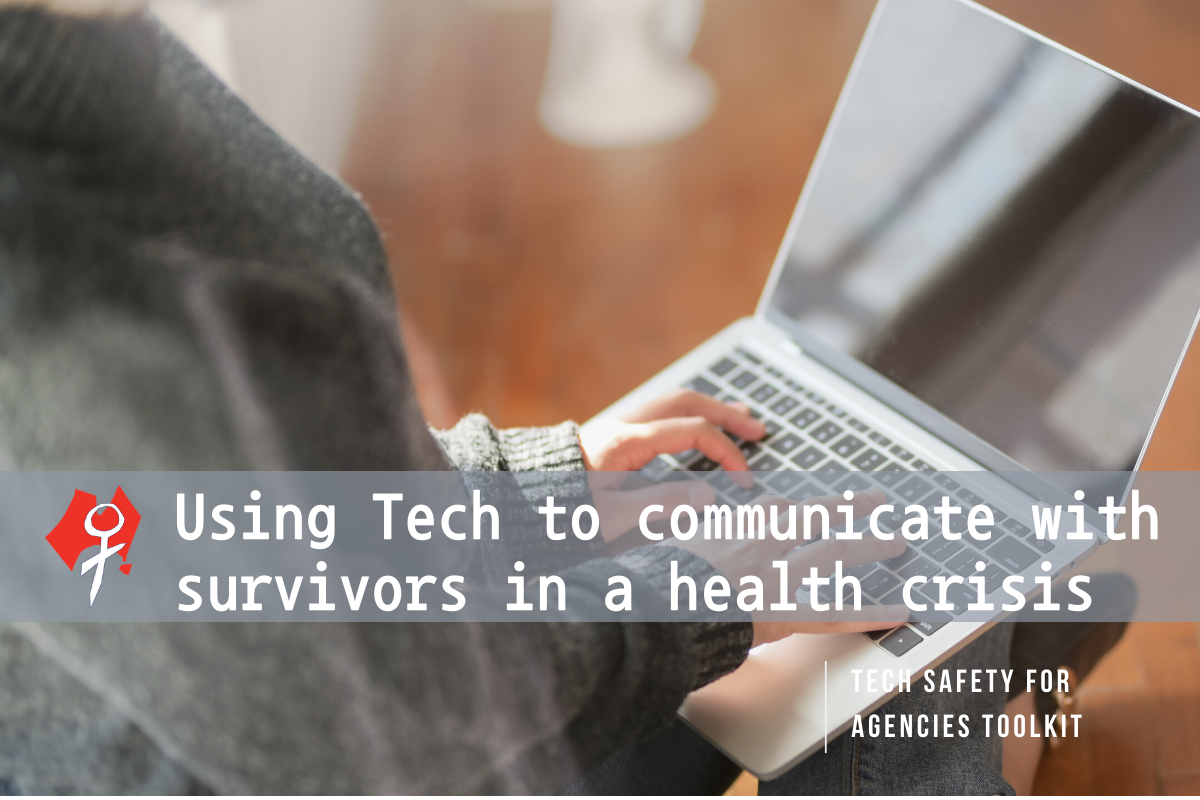Using Technology to Communicate With Survivors During a Public Health Crisis
This handout was adapted for the Australian context under license from the National Network to End DV.
During a public health crisis such as the current COVID-19 pandemic, when public health officials recommend “social distancing” to slow the spread of infection, technology such as video calls or web chats may be useful tools to connect with survivors remotely.
In considering new technology, survivors must be at the centre of our decision-making. This is true in ordinary times and must still apply even in a public health crisis. In practice, this means prioritising both access and privacy.
Digital services offer more ways for survivors to connect to support services. Our sister service, the NNEDV recently developed a Digital Services Toolkit, available in English and Spanish. The toolkit includes guides, worksheets, and recorded webinars focused on assessing capacity, choosing a platform and a vendor, and best practices for various types of tools including text, chat, and video.
While Safety Net recommends a thoughtful and carefully planned approach to adopting new technology, the urgent nature of the current public health crisis may lead some SADFV services to consider technology like video or web chat on a quick timeline. We encourage services that implement digital services during the current COVID-19 pandemic to do so temporarily and re-assess once the pandemic has passed.
The following is a list of tools that SADFV services can consider for communicating with survivors remotely that NNEDV think meet current best practice standards for privacy and confidentiality in the United States. While we do not endorse these tools, they are well- suited to protect privacy as they are currently set up.
- ResourceConnect – web chat and text
- Gruveo – video call
- Cyph – video call, messaging, groups
We share this list in an effort to reduce the privacy risks that go along with rushing to adopt tools quickly without time for more thorough evaluation. It’s important to choose tools that do not create barriers for survivors (e.g. requirements to download an app or create an account), prioritise privacy, and minimise data collection.
Survivor safety and privacy is important. Communicating with survivors through technology comes with benefits and risks. Below are three key risks:
- Personal Safety – Communication via text, email, and online chat leaves a trail that could reveal the survivor is seeking help, as well as other details that could compromise safety. For example, video call software may also automatically store call history.
- Loss of Privacy – Beyond risks related to personal safety, a survivor may also have their privacy compromised by message threads. If someone sees these without their consent, the survivor loses control over their decision to disclose the abuse.
- Privacy – When staff use mobile devices to communicate with survivors, conversation threads and other related records include personally identifying information.
Using technology to communicate with survivors also helps to support staff health and wellbeing. It is important to note that using a worker’s personal mobile devices or accounts for texting, calls, or video increases privacy risks and can also erode a worker’s work-life balance and self-care. For example, if a worker’s personal phone is the main contact a survivor has with a service, they might call or text in the middle of the night. A crisis like COVID-19 should not override our commitment to staff well-being. Staff should be able to be “off-duty” to make sure they are eating properly, looking after themselves and resting – three key points given by public health officials to maintain a strong immune system.
We recommend offering agency-owned devices and accounts. This allows for better staff management across shifts and can increase privacy and safety measures. Read more about best practices for when using a mobile device for service delivery.
We know that with any type of public health crisis, access to services can be even harder for survivors who are seeking resources and support. By adjusting how we operate to meet the needs of survivors, while also understanding the risks of digital service provision, we can help to ensure that survivors and staff have the information they need to get help, and also do their jobs to the best of their ability.
Read more about how to operate as a remote service during a public health crisis.
If your agency has any questions or needs further guidance on how to implement digital services, please contact us using our webform. (We’re mostly working from home)
We update our materials frequently. Please visit TechSafety.org.au for the latest version of this and other materials.
